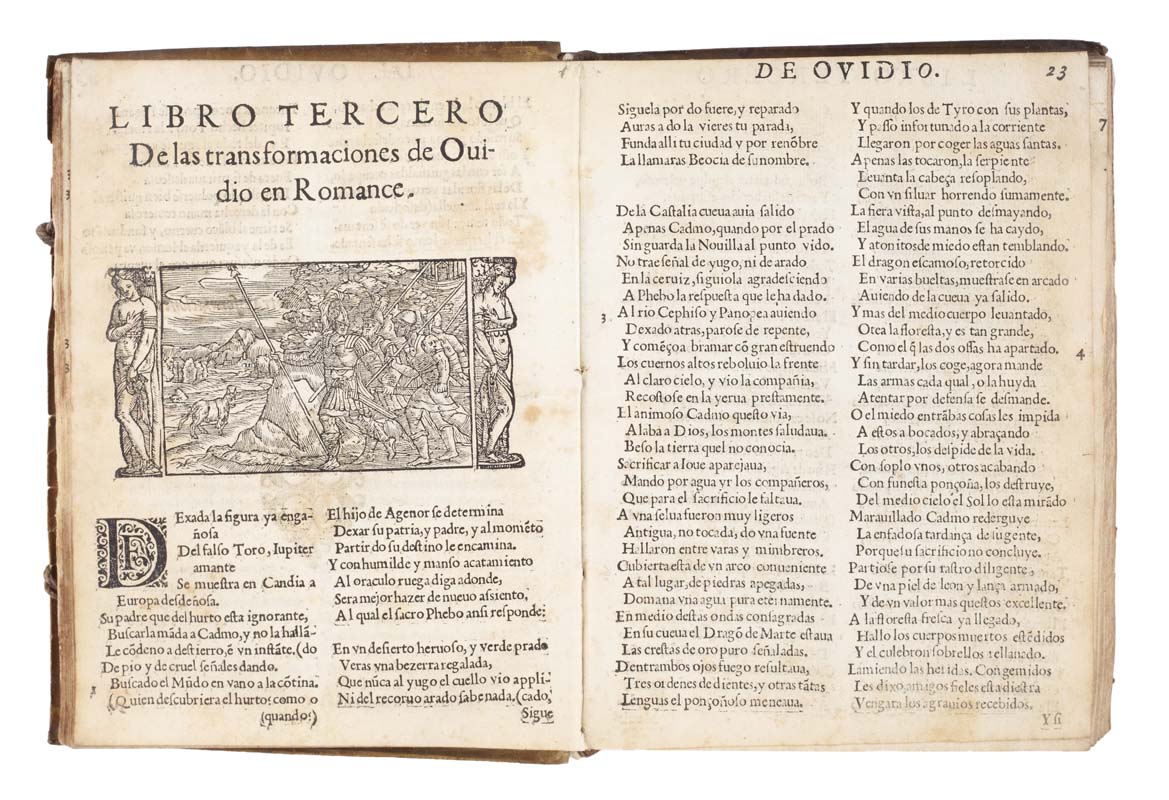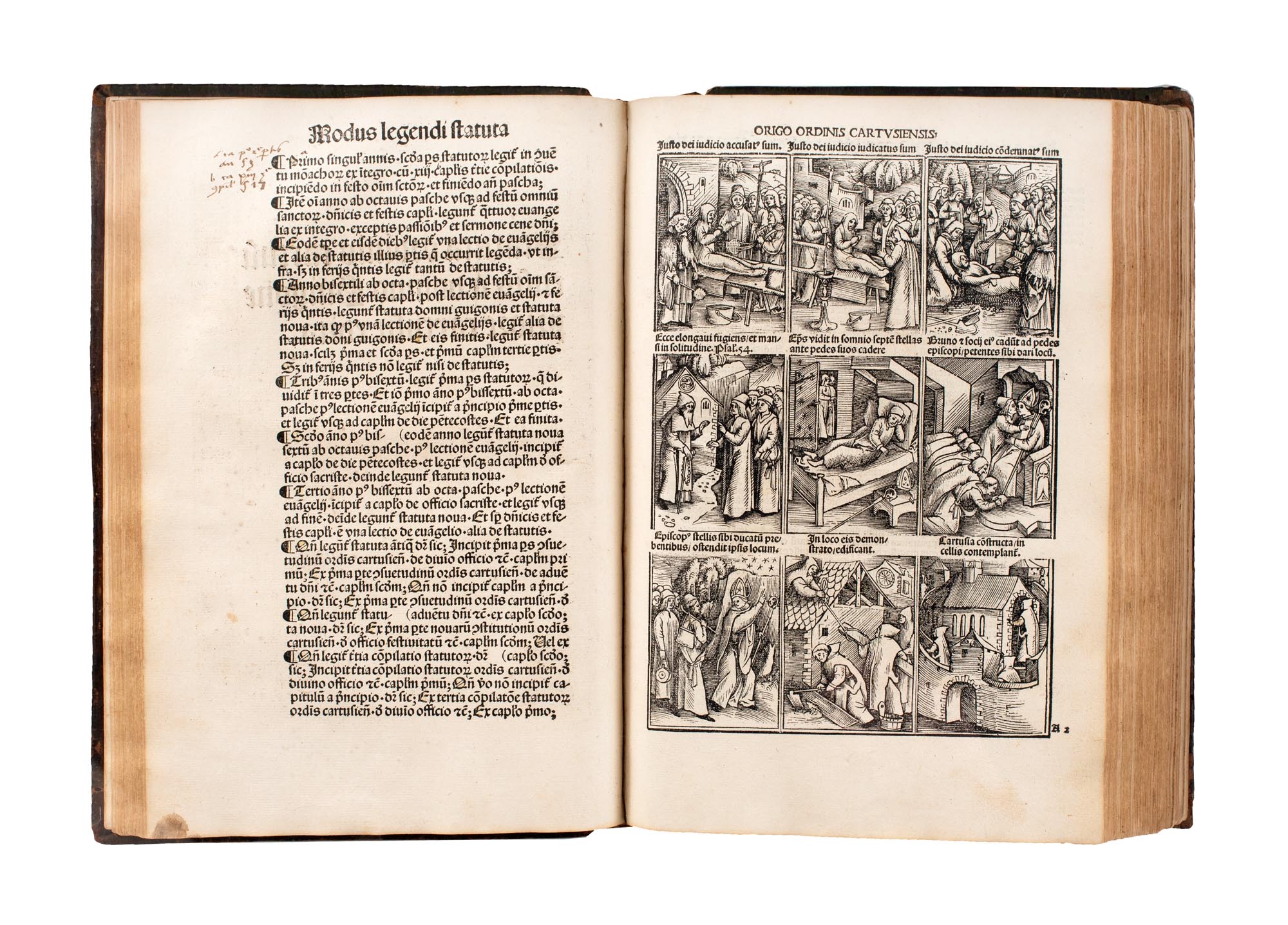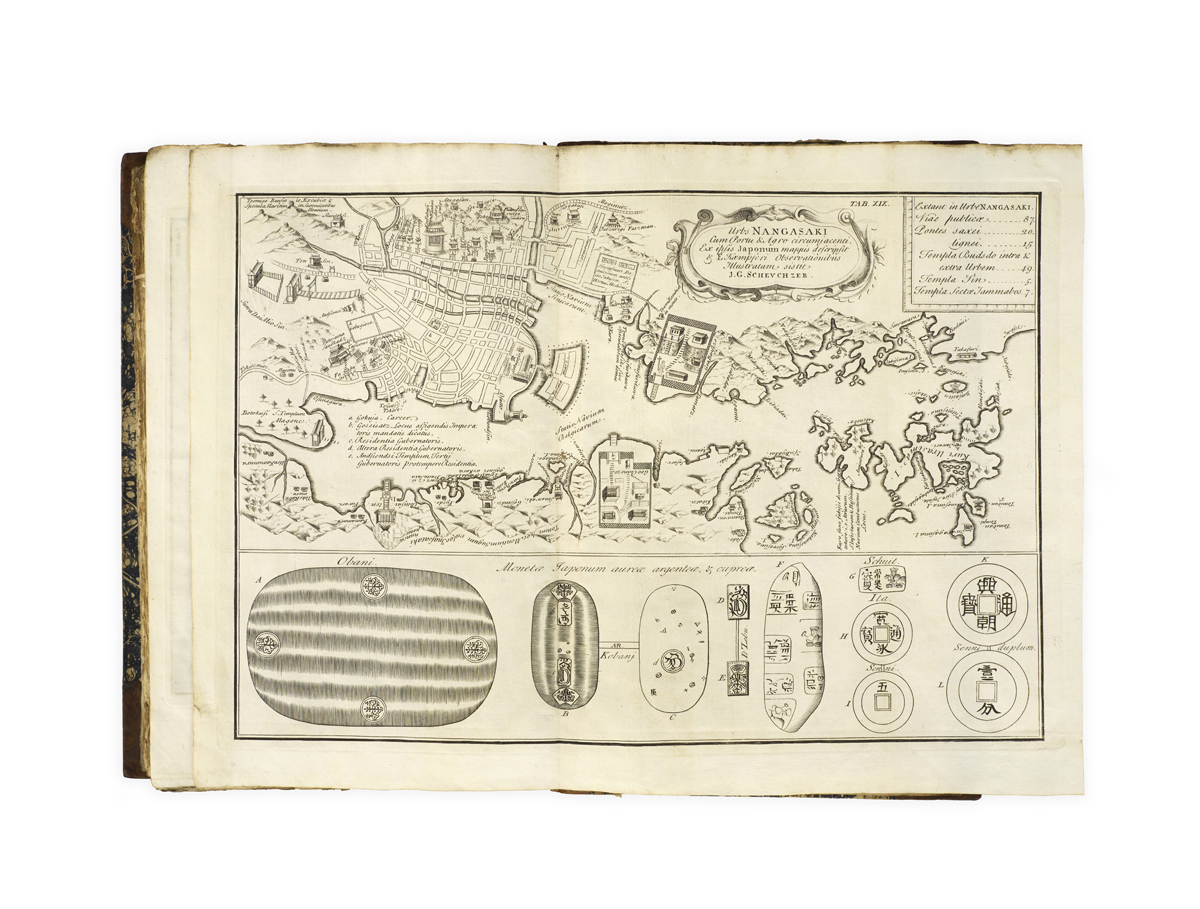
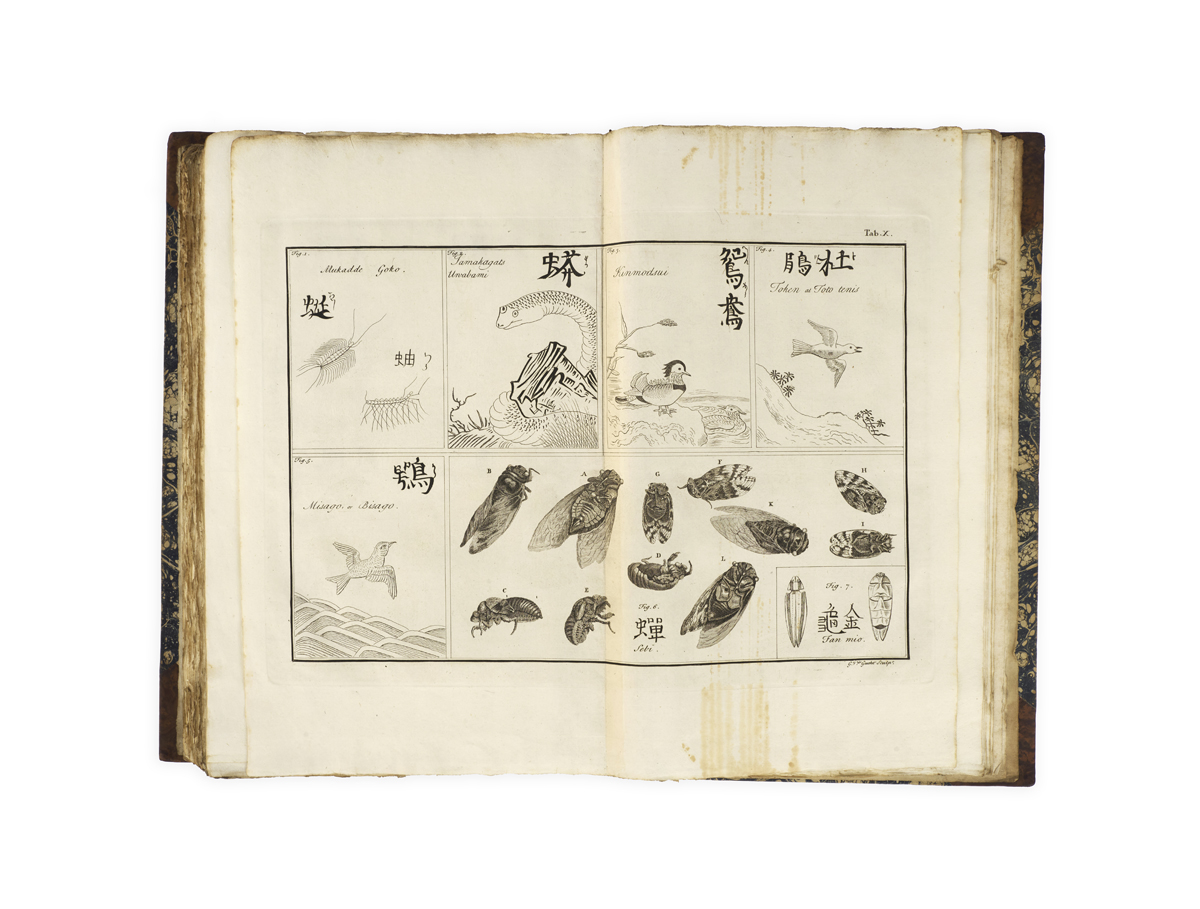
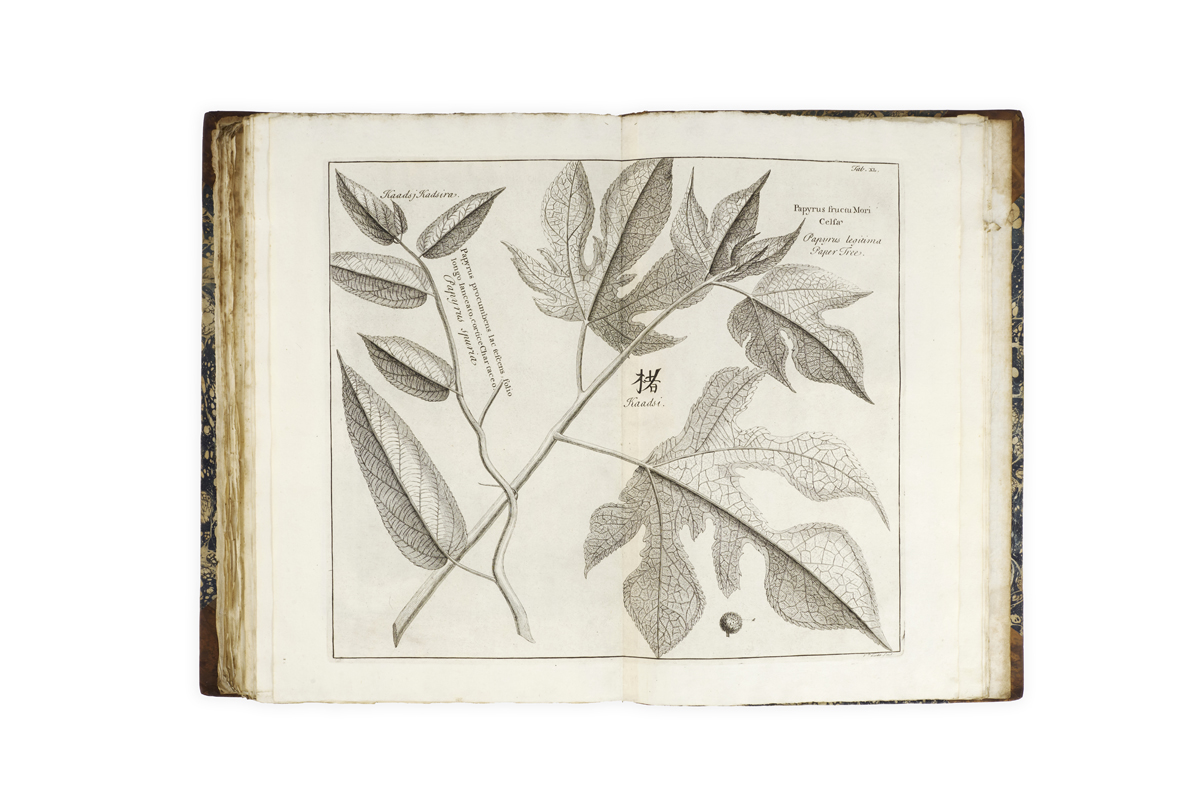
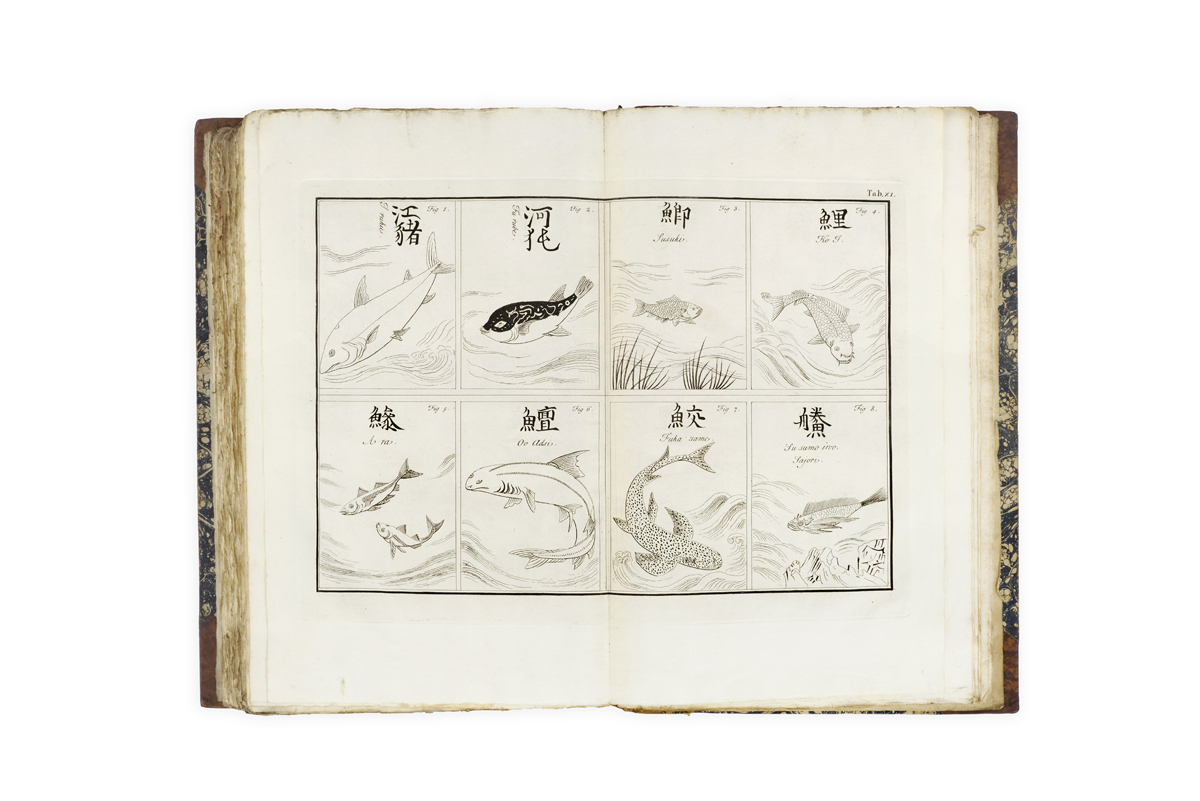
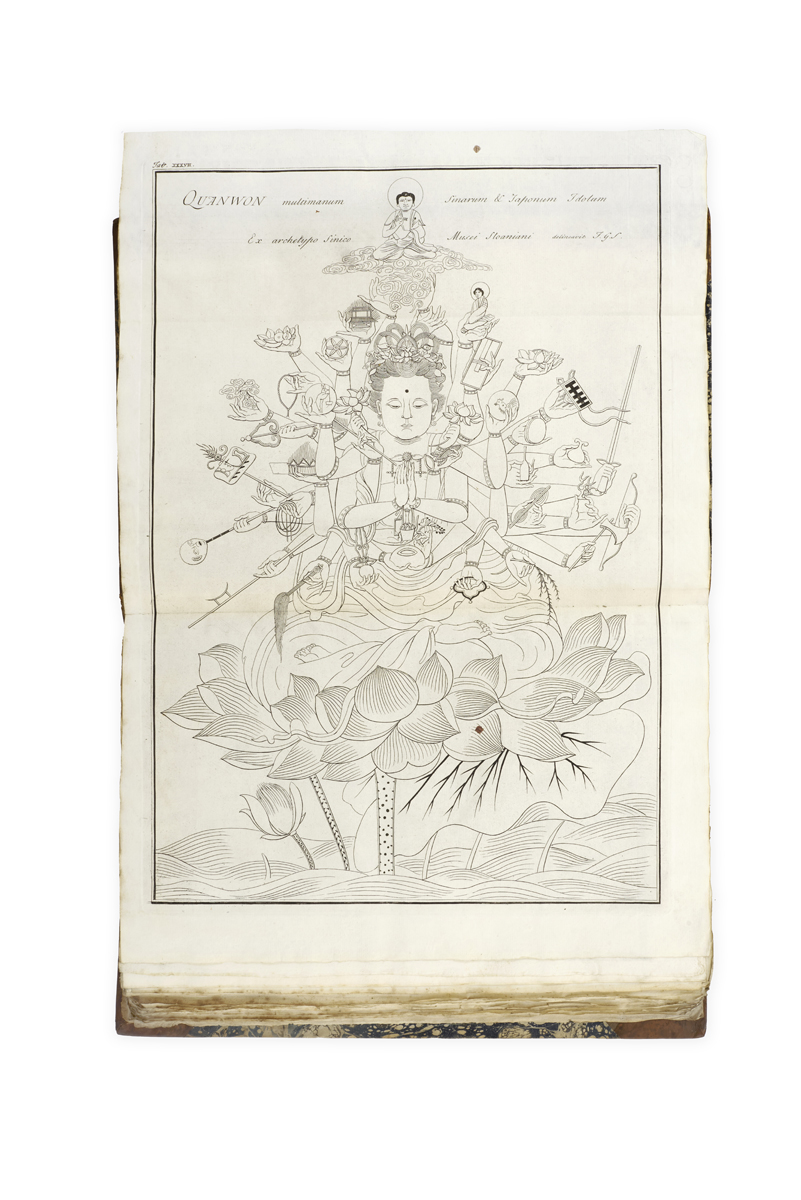
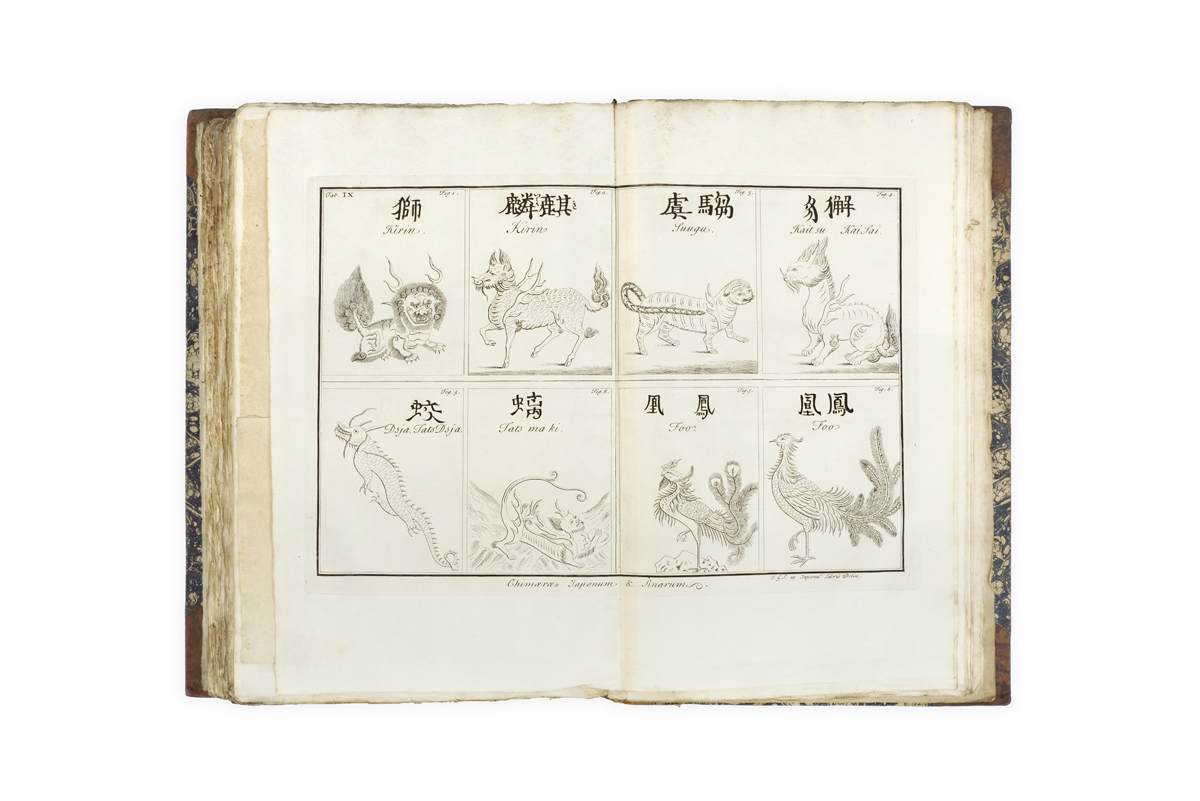
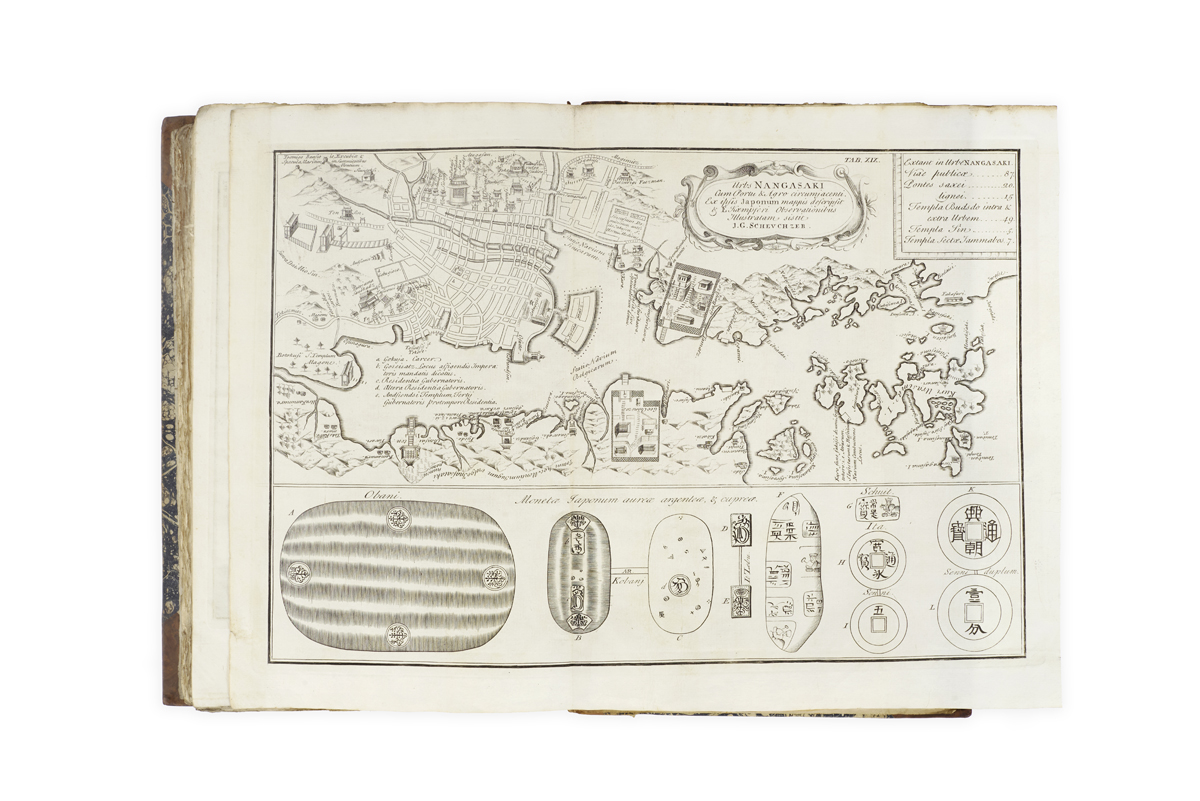
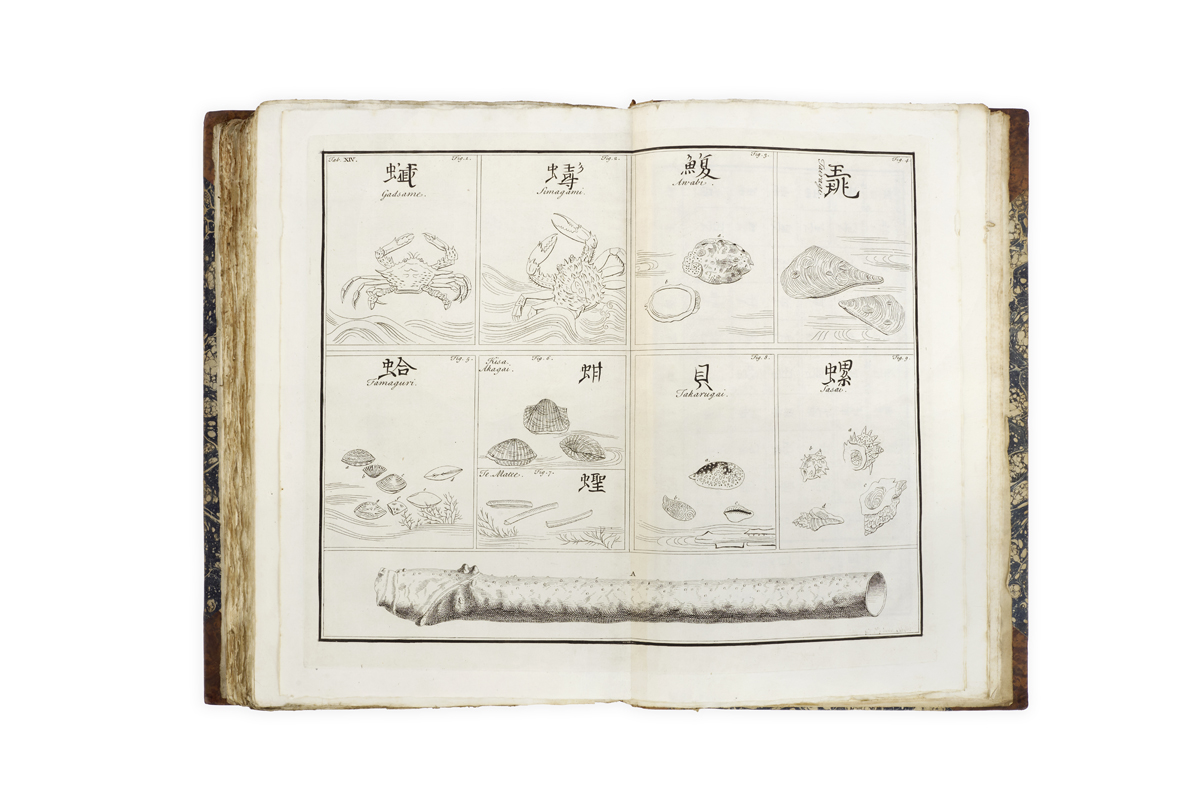

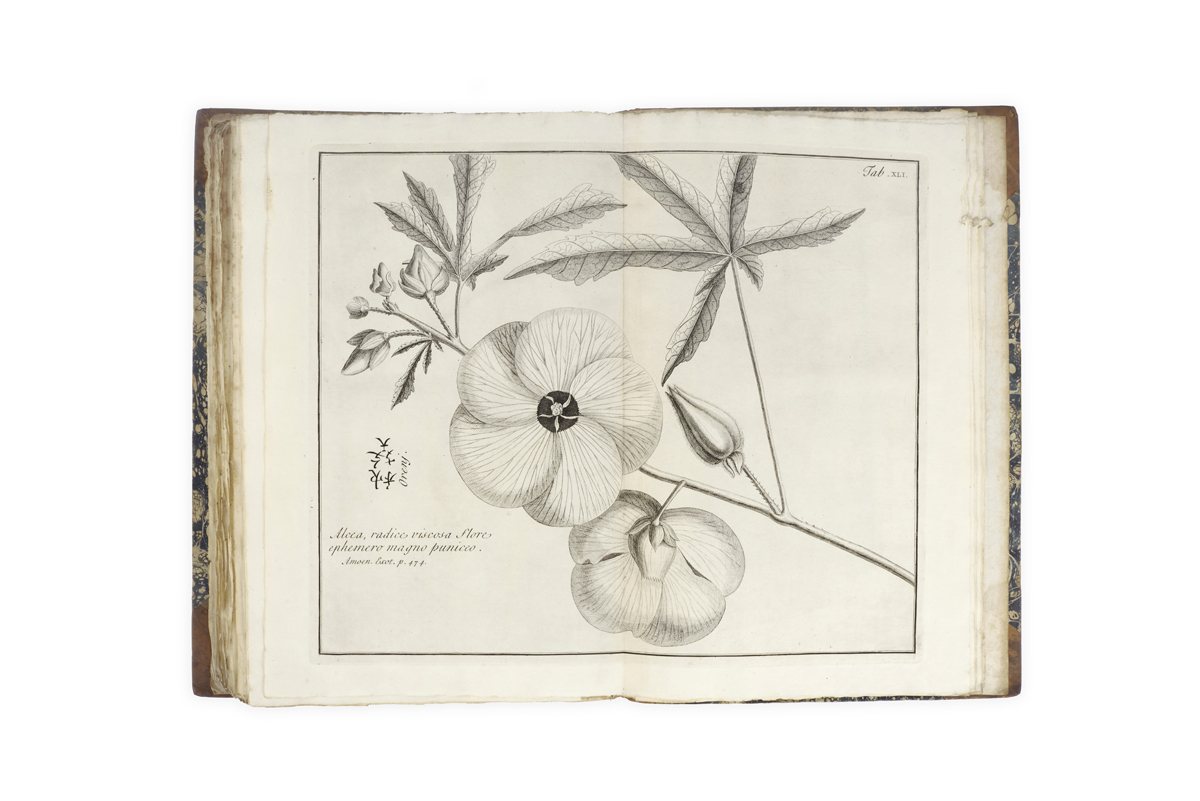

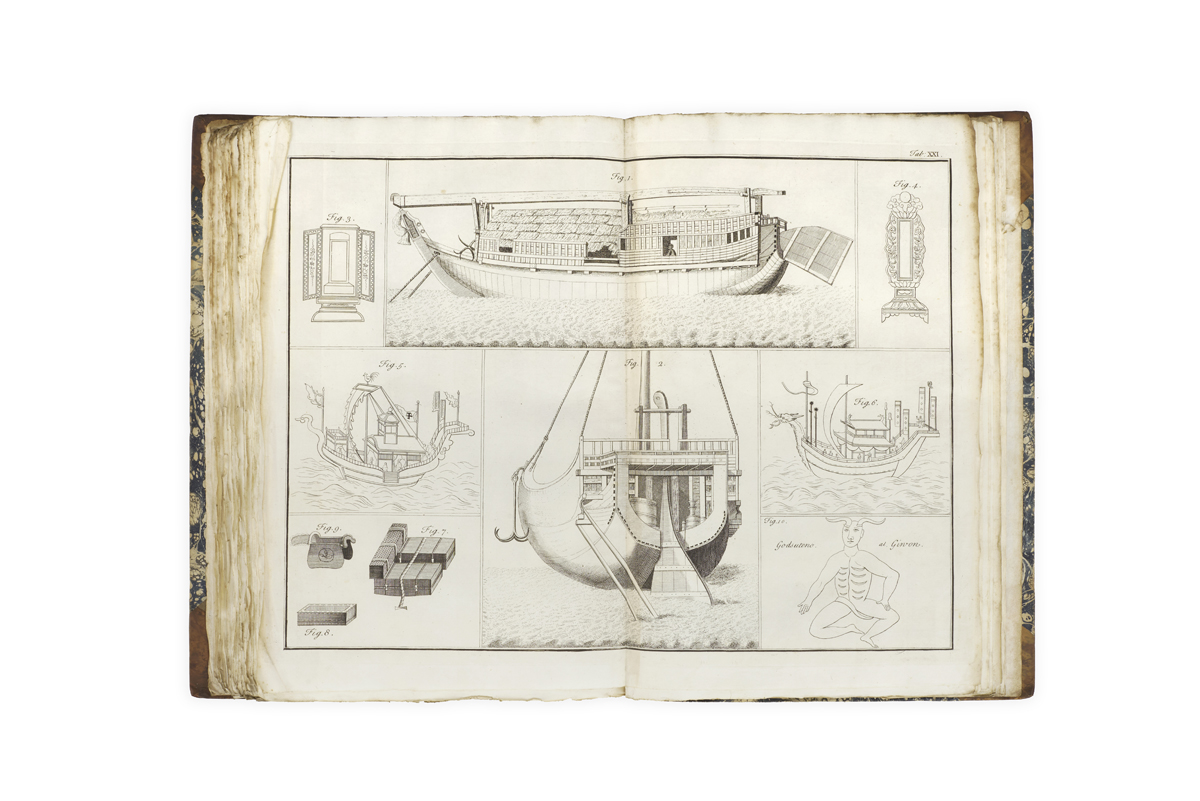

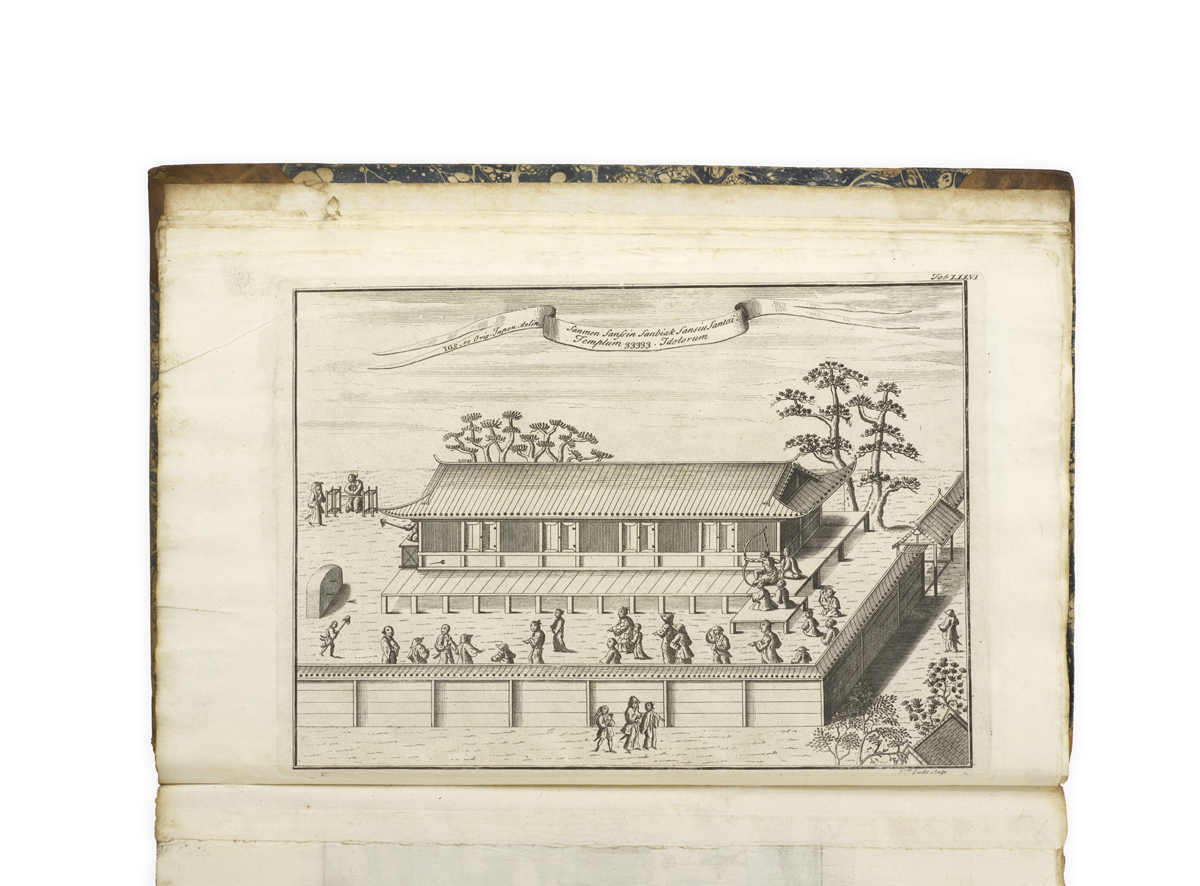
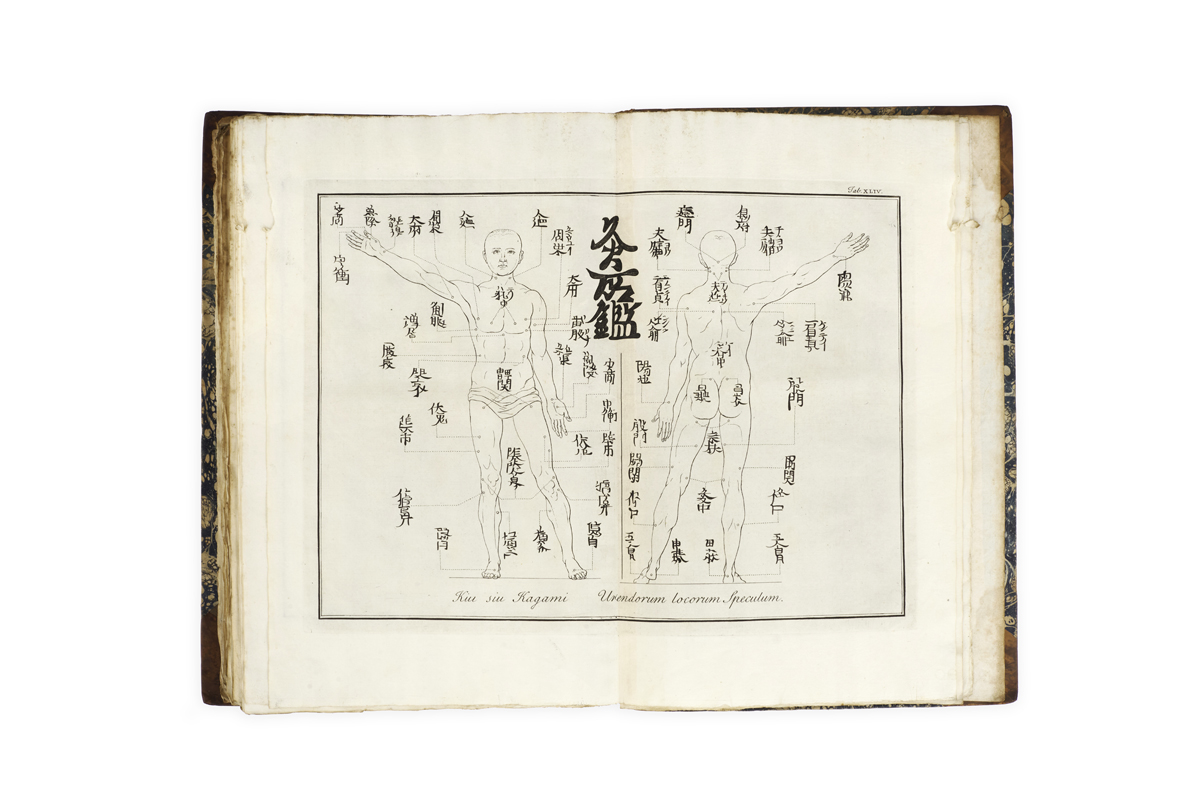
‘THE CHIEF SOURCE OF WESTERN KNOWLEDGE’
KAEMPFER, Engelbert, and John Gaspar SCHEUCHZER (translator).
The History of Japan, giving an Account of the ancient and present State and Government of that Empire; of its Temples, Palaces, Castles and other Buildings; of its Metals, Minerals, Trees, Plants, Animals, Birds and Fishes; of the Chronology and Succession of the Emperors, ecclesiastical and secular; of the original Descent, Religions, Customs, and Manufactures of the Natives, and of their Trade and Commerce with the Dutch and Chinese, together with a Description of the Kingdom of Siam …
London, for the translator, 1727.
Two vols, folio, I: pp. [12], lii, 391, [5], with additional engraved title-page in Latin, and 20 copper-engraved plates (numbered I–XX, bound at end, of which 15 double-page or folding, including several maps), II: pp. [4], 393–612, 75, [5], [6 (index)], with 25 plates (numbered XXI–XLV, bound at end, of which 23 double-page or folding, including maps); titles printed in red and black; some creasing and browning to pl. VIII, occasional light marks; a very good, clean, uncut set in contemporary marbled half calf, marbled sides, spines gilt in compartments with red and black morocco lettering-pieces; some splitting to joints and wear to edges; a few contemporary manuscript additions in English to the index.

Added to your basket:
The History of Japan, giving an Account of the ancient and present State and Government of that Empire; of its Temples, Palaces, Castles and other Buildings; of its Metals, Minerals, Trees, Plants, Animals, Birds and Fishes; of the Chronology and Succession of the Emperors, ecclesiastical and secular; of the original Descent, Religions, Customs, and Manufactures of the Natives, and of their Trade and Commerce with the Dutch and Chinese, together with a Description of the Kingdom of Siam …
First edition, first issue, of the German naturalist Engelbert Kaempfer’s monumental History of Japan, translated by the Swiss naturalist Johann Caspar Scheuchzer and illustrated with splendid plates.
Engelbert Kaempfer (1651–1716), a trained physician from Lippe with an incorrigible Wanderlust, sailed from Batavia (Jakarta) via Siam (Thailand) as a physician with the Dutch East India Company and reached Japan in late 1690. Although much of his two-year sojourn was spent on the island of Deshima, to which the Dutch merchants were confined by the strict orders of the Tokugawa regime, he was twice able to accompany the annual Dutch embassy from Nagasaki to the Shogun’s court at Edo (Tokyo).
After Kaempfer’s death in 1716 Sir Hans Sloane purchased his botanical collections and library, including the unpublished manuscript of the History of Japan, which was translated into English by Johann Caspar Scheuchzer (1684–1738), then Sloane’s librarian, and published under the aegis of the Royal Society with Sloane’s imprimatur (27 April 1727) as President (see Henrey II, pp. 180–1). The English edition of Kaempfer’s History is therefore its first appearance in print in any language. This is the original issue, the book being re-issued the following year with a new title-page dated 1728 and a Second Appendix concerning the unsuccessful attempt of the English to re-open direct trade with Japan in 1673. Unsurprisingly, Sloane is named as one of the book’s subscribers, alongside a range of notable naturalists and physicians, such as Richard Hale and John Woodward, and the radical deist philosopher (and committed book-collector) Anthony Collins.
The History of Japan was ‘for more than a century the chief source of Western knowledge of the country. It contains the first biography of Kaempfer, an account of his journey, a history and description of Japan and its fauna, a description of Nagasaki and Deshima; a report on two embassies to Edo with a description of the cities which were visited on the way; and six appendixes, on tea, Japanese paper, acupuncture, moxa, ambergris, and Japan’s seclusion policy’ (DSB).
The majority of the forty-five plates – which offer a rich array of maps and plans, flora and fauna, views of settlements and structures, images of boats, instruments, and processions, reproductions of Japanese script, and an anatomical diagram for acupuncture – were designed by Scheuchzer from Kaempfer’s unfinished originals or from prints in Sloane’s collection.
Cordier, Japonica 413–4; Landwehr, VOC 530.
